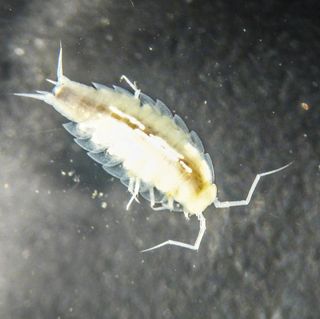During the course of the European Space Station's training, they do cave diving to experience the pressure your body must withstand while taking off into space. Whilst these astronauts were cave diving off the coast of Sardinia, astronauts discovered a brand new isopod, closely related to the bugs we tend to call "roly polys". These new isopods are closely related to crabs and crustaceans and can survive over 350 pounds of pressure! All of that while only measuring approximately 3 inches in length.
These crustaceans were given the name "Sideralis", which is the Latin name for star (get it, because astronauts discovered it :) . Some of these isopods were captured and are currently being studied at the European Space Station to study their structure and how that helps them withstand the pressure and temperature underwater. These discoveries could potentially be used in biomimetic engineering to help build more efficient and safe space suits for astronauts. Also, biomimetic engineers are working on crafting a spaceship that can withstand further pressure in order to travel further and for longer periods of time, and this discovery can help them with their ideas.
Scientists who have been assigned the task of studying these new creatures have hypothesized that when astronauts land on mars, their caves may have similar creatures due to the similar conditions of the caves in Sardinia compared to the deep caves of Mars that have yet to be explored. Paulo Marcia, zoologist, elaborates, "I would like to think that when humans land on Mars and explore its caves, this experience will help them to look for other species knowing that life has few limits and can develop in the most inhospitable places," Space exploration will benefit from this discovery and hopefully, one day, we have the resources to travel to further planets and possibly discover different life forms such as Sideralis.
 |
| astronauts cave diving in sardinia |
 |
| sideralis, the new isopod. |


Pretty cool !
ReplyDelete